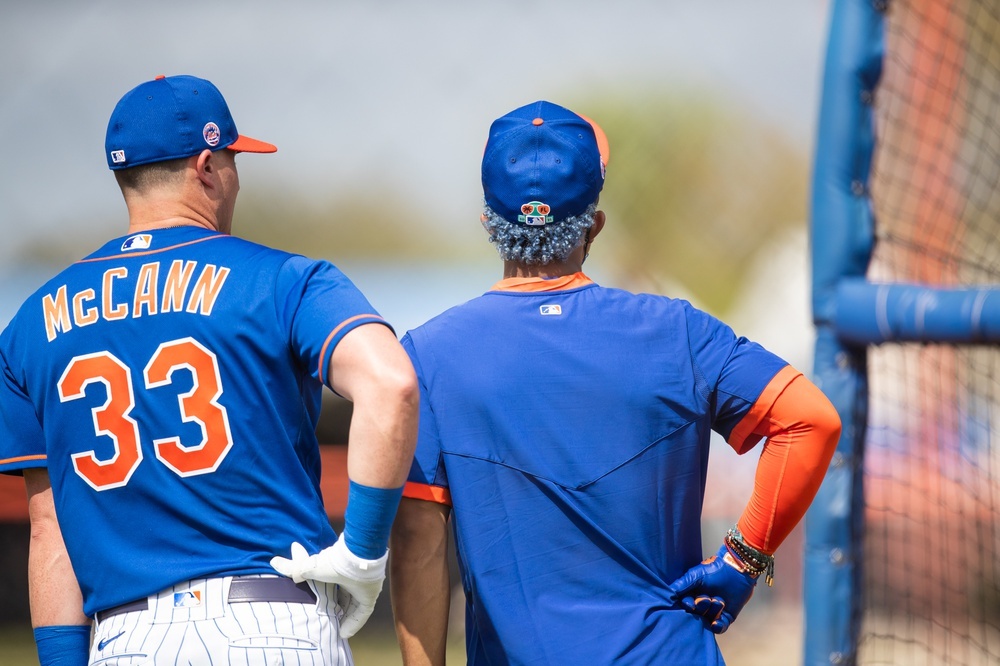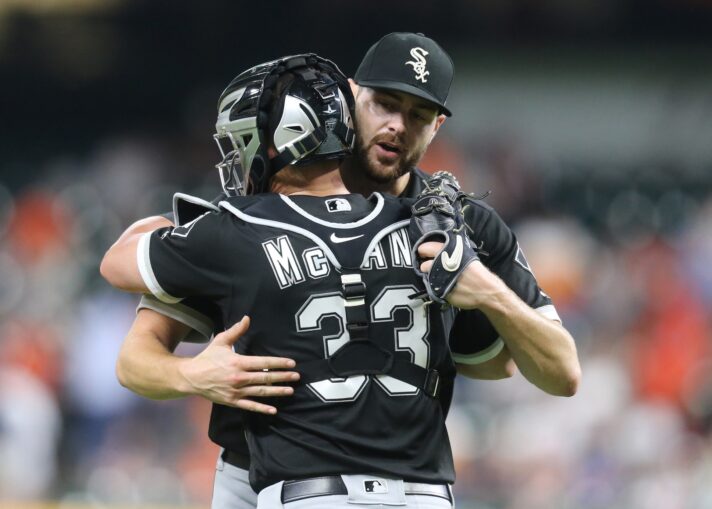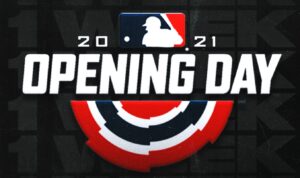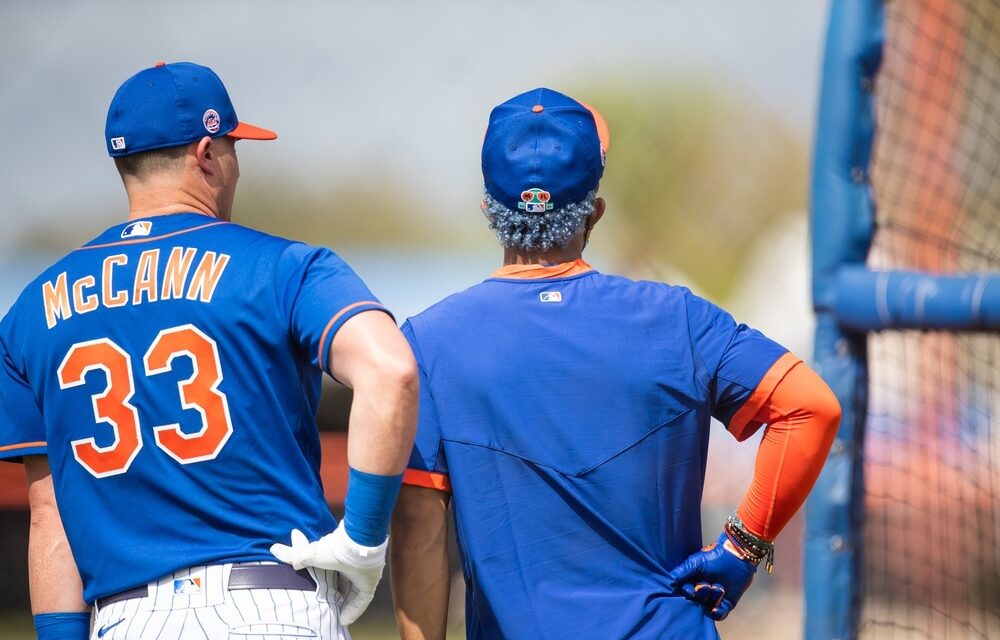
Mary Holt-USA TODAY Sports
At the end of the 2018 season, James McCann was non-tendered, which meant he was effectively released by the Detroit Tigers. At that point, McCann was making a little over $2 million dollars a year but the Tigers felt like he wasn’t worth retaining. Two years later, after a stop in the south side of Chicago, McCann officially signed a four-year, $40.5 million contract with the Mets. Making McCann their catcher until the 2025 season, hopefully right in time for Francisco Alvarez to become the full-time starter.
Sandy Alderson and Steve Cohen felt confident enough to forgo an aggressive pursuit of J.T. Realmuto and inked McCann to his four-year deal, which made him the first top 20 free agent based on MLB Trade Rumors rankings to sign a contract in the 2020 off-season. Steve Cohen has made it known that he is willing to spend money this off-season, but not to the point where they are acting like “drunken sailors”. Despite this, they settled on McCann and didn’t want to spend the majority of the off-season money on just Realmuto. Just two years after getting released, why did the Mets front office decide to sign McCann to a four-year deal, which was higher than projected by MLBTR?
Due to the nature of the catcher position, defense is arguably as important if not more important than offense, depending on the team. The Mets had the No. 1 offense last year in terms of wRC+, so getting a defensive upgrade to Wilson Ramos was the key.
Doing some initial digging, it’s a bit surprising to see that in McCann’s last full season, 2019, he was in the 12th percentile in Framing and the 23rd percentile in second base pop time according to Baseball Savant. Signing a catcher who was in the bottom 25% in two important catcher metrics in his last full year seems like a bad decision for the Mets if they are relying on McCann’s defense, but doing some further research yields some important insights.
Across 31 games played in the 2020 season, McCann jumped from the 12th percentile to the 88th percentile in framing. While many will quickly point to a small sample size, this doesn’t seem like a fluke, as McCann made notable and apparent changes in how he approaches framing the ball.
In an article written by James Fegan of The Athletic, it described the work McCann put in with Jerry Narron, a former MLB catcher that has worked with players like Jeff Mathis, Carson Kelly, Martin Maldonado, Jonathan Lucroy, David Ross, and more. Maldonado was so appreciative of Narron’s help that he sent his 2017 Gold Glove for him to keep.
In McCann’s work with Narron, they prioritized framing low pitches and “beat[ing] the ball to the spot”. Fegan further explained the work they put in the off-season explaining how “After growing up with the school of thought of being ‘quiet’ with all of his hand movements, and staying in a squat to allow more lateral movement and blocking, McCann and Narron went over how the 30-year-old, 6-foot-3 backstop had been losing calls on pitches below the zone throughout his career because he wasn’t set up low enough. Unless you’re watching the catch on every pitch the way McCann does whenever he’s watching baseball nowadays, it’s subtle, but he’s made a jarring switch to more actively pulling the ball up through the zone on every pitch, and setting up to do so on one knee far more frequently”.
The Statcast framing numbers back up the work McCann put in the offseason. Here is a look at McCann’s framing numbers in the bottom of the strike zone with 2020 on the top and 2019 on the bottom:

This chart shows the Strike Rate in each zone which is a percentage that represents how often a ball was called a strike in that part of the zone (highlighted in red). In 2020, McCann was 6th out of all qualified catchers in Zone 18 and he posted his first season with a positive Runs Extra Strikes (which calculates how many extra runs the catcher created from called strikes).
While McCann’s framing numbers low in the zone improved, they did take a hit in the top of the zone, which makes sense since he is now setting up lower in the zone than he had before. Despite this, more pitches end up below the zone than above the zone, so improving his framing on low pitches was the key to him becoming a good framing catcher.
Overall, here is a look at how McCann stacked up framing pitches in each zone highlighted by his overall numbers:

Here are some notable rankings:
- 1st in Strike Rate in Zone 16 (right middle of the zone)
- 6th in Strike Rate in Zone 18 (bottom middle of the zone)
- 8th in Strike Rate out of Qualified Catchers (% of strikes called a strike in the shadow zones)
In order for McCann’s contract to provide surplus value for the Mets, they need him to maintain, if not improve, his 2020 framing numbers. I am confident his new approach in framing low pitches will stick and that is why the Mets took the risk. Catchers are notoriously late bloomers and probably reach their peak at the latest age out of any position. Mets fans saw the development of Travis d’Arnaud this year with the Braves and he had a career year at the age of 31 (McCann is 30).
As always, numbers paint one picture but the video could tell a different story. Based on what I have seen, the differences between McCann’s positioning in 2019 and 2020 are stark and aligns with the work he put in with Narron. Here is a great side-by-side of McCann’s development:
Here’s how James McCann improved his pitch framing to go from dead last among qualified catchers in Runs From Extra Strikes — which converts strikes to runs saved based on the catcher’s ability to gain called strikes on pitches that border the strike zone — to 9th this past year pic.twitter.com/4szTcN1M5u
— JB (@JeffreyBellone) December 9, 2020
With pitchers on their staff like Marcus Stroman, Noah Syndergaard, and Carlos Carrasco who all rely on dominating in the bottom part of the zone, it is imperative that McCann is able to steal a lot of strikes for his pitching staff as they won’t be forced to throw extra pitches in an at-bat.
Beyond just framing pitches, a lot more goes into being a good defensive catcher. This includes controlling the running game, game planning for hitters, and understanding your pitchers.
When it comes to controlling the running game, there are a lot of external factors that the catcher can’t control like the speed of the runner and how effective the pitcher is at holding on runners. If the pitcher has a long delivery, it makes it tough for the catcher to consistently throw out runners. But based on what I have researched, it seems that McCann does a fairly good job at throwing out runners.
While Baseball Savant hasn’t publicly released catcher pop time to 2B for 2020, in the past, McCann has been below average, ranking in the 23rd and 27th percentile in 2019 and 2018 respectively. When he was on the Tigers, his rankings were slightly better as he was in the 50th and 59th percentile in 2017 and 2016 respectively. Even though his pop time steadily declined each year from 2016-2019, his caught stealing percentage remained pretty consistent, hovering around 30-36% with both the Tigers and White Sox, which ranked him in the top 5.
Instead of giving you my own take on how James McCann will fare in throwing out runners for the Mets, I will provide you with a good compilation of his arm and his overall throwing ability:
https://www.youtube.com/watch?v=KB8LNPGZJvg
Moving on from the things you can evaluate with numbers and statistics, we need to talk about McCann’s ability to impact a game from the mental standpoint. Catchers need to have a scouting report in their head for each hitter so they know how to attack the hitter and what pitches to call for along with the sequence in which to throw them.
To start off, I feel it is important to mention the fact that James McCann, not Yasmani Grandal, was the one who caught Lucas Giolito’s no-hitter in 2020, despite Grandal getting more playing time than McCann.
While some may think that it was luck of the draw that McCann caught Giolito’s no-hitter instead of Grandal, Giolito was vastly superior when McCann was behind the dish to the point where McCann basically became his personal catcher:
Giolito with McCann in 2020: 51.2 IP, 2.61 ERA, .494 OPS
Giolito with Grandal in 2020: 20.2 IP, 5.66 ERA, .767 OPS
Giolito is on record mentioning how much he “really loves throwing to [McCann]” (670 The Score). Beyond the high praise he verbally gave, it is evident Giolito feels more comfortable throwing to McCann. His numbers with and without McCann catching him are stark:
McCann/Giolito career numbers: 228 IP, 3.23 ERA, .613 OPS
All other catchers/Giolito career numbers: 260.2 IP, 5.50 ERA, .779 OPS
Across all catchers that have ever caught Giolito, his lowest ERA and OPS are with McCann.

Credit: Thomas B. Shea-USA TODAY Sports
I mention all of this to show how McCann is a reliable catcher that pitchers trust. The pitcher/catcher relationship is one of the most important in baseball and it is critical that they trust each other and are working together.
In his introductory press conference with the Mets, James McCann explained how he builds a relationship with pitchers:
“It begins with trust. Knowing what makes someone tick is different than merely knowing them. There must be a deeper understanding there. In the baseball world, it’s easy to know somebody on the field. Sometimes it takes a little bit longer to get to know somebody off the field and you want to know what’s going on at home, what’s going on with their family off the field. But what makes somebody tick, honestly the easiest way to figure that out is going through game-like experiences. Finding out what happens when there’s runners on second and third with two outs in a one-run ball game. How does someone react to a certain situation?”
Getting that trust and sense of how pitchers will react in various scenarios gives McCann insight into figuring out how best to call the game. Knowing their strengths and weaknesses allows him to call certain pitches in favorable counts and lets him tailor the at-bat to hopefully favor the pitcher.
The Mets are betting on McCann to be their future catcher for years to come, a position that they’ve sought to reliably fill ever since Mike Piazza left. If McCann can combine his offensive production in 2019 and his defensive production in 2020, the Mets will be very happy with their signing, and that $10 million AAV gives them the financial flexibility that signing J.T. Realmuto wouldn’t have. If Realmuto had signed with the Mets, it would have been nearly impossible for the Mets to trade for Francisco Lindor and also sign him to a long-term extension. All the Mets hope for is that McCann provides surplus value to his contract, not that he necessarily performs better than Realmuto in the foreseeable future.















